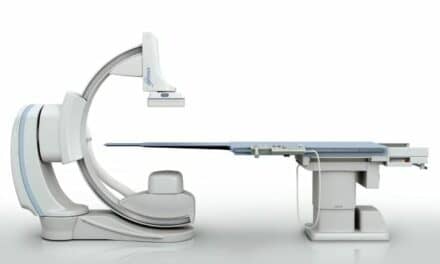Philips showcased its latest image-guidance technologies at the Transcatheter Cardiovascular Therapeutics meeting, which took place in Washington, D.C., from October 29 to November 2. At the conference, the company demonstrated its instant wave-Free Radio (iFR) co-registration, which integrates iFR pullback data with the angiogram, and the third-generation of HeartNavigator, its live-image guidance software for use in advanced structural heart disease procedures.
With Philips’ image-guided therapy tools, clinicians can decide, guide, and confirm the appropriate therapy to help improve patient outcomes. Clinicians can use iFR co-registration to assess coronary artery blockages through the Philips Volcano pressure measurement guide-wires and equipment—and that means no time-consuming pullback devices or guesswork.
The company’s HeartNavigator planning and guidance software can be used to measure, select an aortic valve repair device, and choose the x-ray viewing angle. A 3D image can be composed from previously acquired CT datasets and overlaid on live fluoroscopy for real-time 3D guidance. Since the technology provides an immersive user experience, clinicians have increased confidence throughout difficult procedures, such as transcatheter aortic valve replacement.
“Image-guided therapy is key to effective cardiovascular care, and Philips is committed to offering innovative solutions that enable more personalized care and better treatment for patients,” says Bert van Meurs, business leader of image-guided therapy for Philips.“The introduction of iFR co-registration adds to our robust suite of integrated solutions and strategies for cardiology that help health care professionals determine appropriate therapeutic approaches and deliver treatment with more confidence.”
For more information about these technologies, visit Philips.



